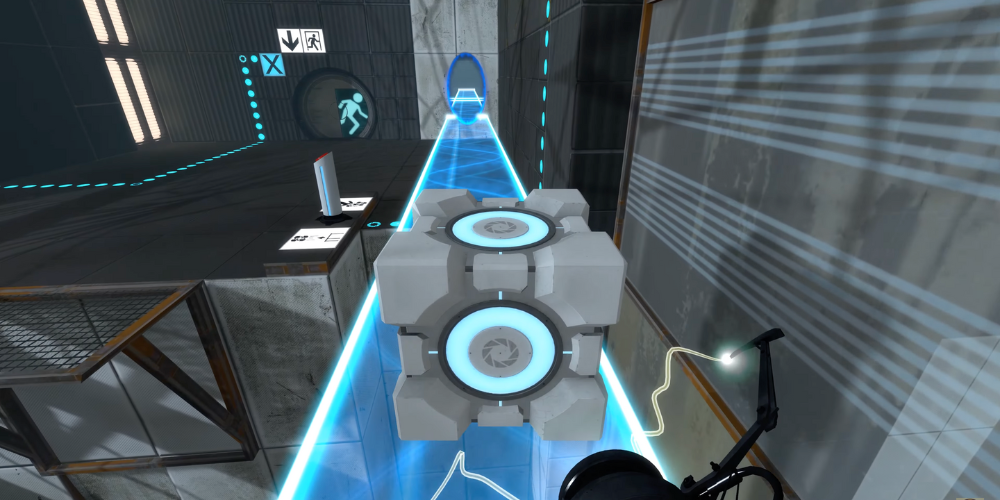
In the world of gaming, rare are the games that blend intricate scientific concepts with captivating game mechanics as smoothly as Valve Corporation's "Portal 2." Within its suite of cleverly designed levels, the process of constructing bridges shines prominently, presenting a distinctive mix of physics, strategic planning, and spatial awareness puzzles. This conversation explores the intricate art of bridge building in "Portal 2," analyzing how this aspect not only elevates the gaming experience but also acts as a learning resource on basic principles of physics and engineering.
Understanding the Game Mechanics
"Portal 2" introduces the Hard Light Bridge, a solid light beam that players can generate and manipulate to form pathways across game levels. These bridges must be cleverly positioned to avoid obstacles, connect distant platforms, and sometimes act as shields against threats. The game cleverly mimics real-world physics properties through these light bridges, challenging players to think like engineers as they manipulate their environment to solve puzzles.
Properties of Hard Light Bridges
The Hard Light Bridge in "Portal 2" simulates properties similar to those of physical solid objects despite being made entirely of light. These properties include:
- Stability: Once formed, these bridges remain fixed in place unless disrupted by gameplay mechanics, such as the redirection of their source portal.
- Weight Capacity: Although the game doesn't specify a max weight, the bridges support any weight that can physically access them, including the player, game objects, and even some enemies.
- Interaction with Environments: Light bridges can interact with various surfaces and objects, reflecting and refracting, providing both utilitarian and defensive uses.
Placement Strategies

Effective placement of these Hard Light Bridges often involves:
- Understanding environmental clues and geometry to position the portals correctly.
- Utilizing trial and error to discover the potential interactions between the bridge and the level's architectural features.
- Strategic thinking to foresee the movement of various game elements in relation to the bridge.
Physics Behind the Bridges
At its core, the implementation of Hard Light Bridges in "Portal 2" encourages players to apply fundamental physics concepts, particularly those related to optics and structural engineering.
Optics and Light Behavior
While Hard Light Bridges are a fictional creation, their behavior borrows heavily from real-world physics governing light, such as the wave-particle duality and principles of light propagation. In game terms, this translates to:
- Directionality: The bridge extends straight from its source portal until it meets an obstacle, mimicking light's linear path in a homogenous medium.
- Reflection: When oriented appropriately, these bridges can deflect incoming objects and energy pulses, akin to how a mirror reflects light.
Structural Engineering Basics

While the game simplifies the complexity typical of actual bridge construction, it prompts players to think like structural engineers, especially in terms of load distribution and bridge integrity. Key considerations include:
- Point of Support: Emphasis is on the portals’ placement, which act as the primary supports for the bridges.
- Stress and Strain: Players must consider how other elements in the game environment might exert stress on the bridges, such as machinery movement or enemy interaction.
Strategizing with Bridges
Beyond their mechanical function, the bridges in "Portal 2" provide a strategic layer to the gameplay, engaging players in deeper-level thinking and planning.
Problem Solving with Bridges
Each level designed with a bridge in mind includes puzzles that cannot be resolved through straightforward means. Players are often tasked to re-think their approach continuously, treating each bridge placement as a move in a complex chess game.
Defensive and Offensive Uses
Strategically, bridges serve more than just for navigation between points. They can be tactically deployed for defense against turret fire or to block off enemy patrol paths, turning the environment itself into a tool against threats.
Educational Impact of Bridge Building in Portal 2

The educational value of integrating such complex mechanics into a video game is significant. By allowing players to experiment with the principles of physics and engineering in a risk-free environment, "Portal 2" fosters a form of learning that is both interactive and impactful.
Insights Gained from Gameplay
Players often emerge from the game with a better understanding of:
- Physical principles such as the behavior of light and basic engineering concepts.
- Problem-solving methods, particularly in adapting to new and changing environments.
- The importance of strategy and foresight, applying theoretical knowledge in practical scenarios.
The Role of Immersive Learning
The engaging quality of the game transforms learning into an incidental benefit of enjoyment, greatly improving memory of the introduced ideas. This method not only maintains player interest but also fosters a broader educational discussion outside of the gameplay.
In conclusion, the bridge-building aspect of "Portal 2" showcases how video games can serve as powerful educational tools, making complex scientific principles accessible and compelling. Through strategic gameplay, players are not only entertained but given a practical lesson in physics and engineering that resonates well beyond the digital world.